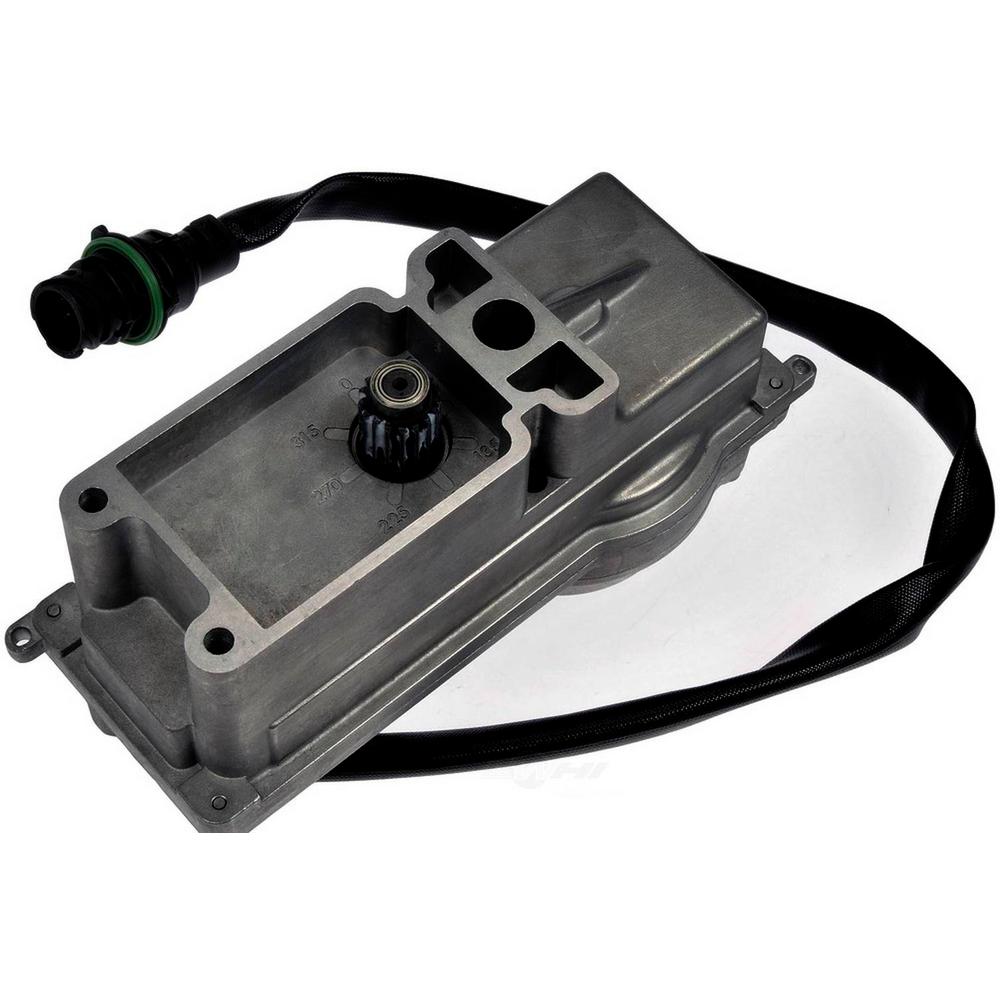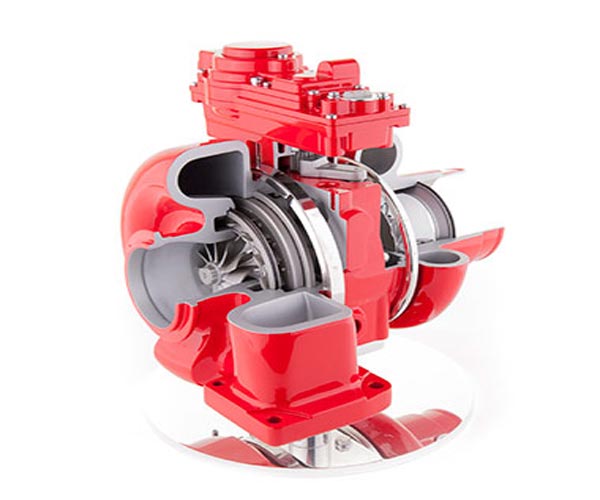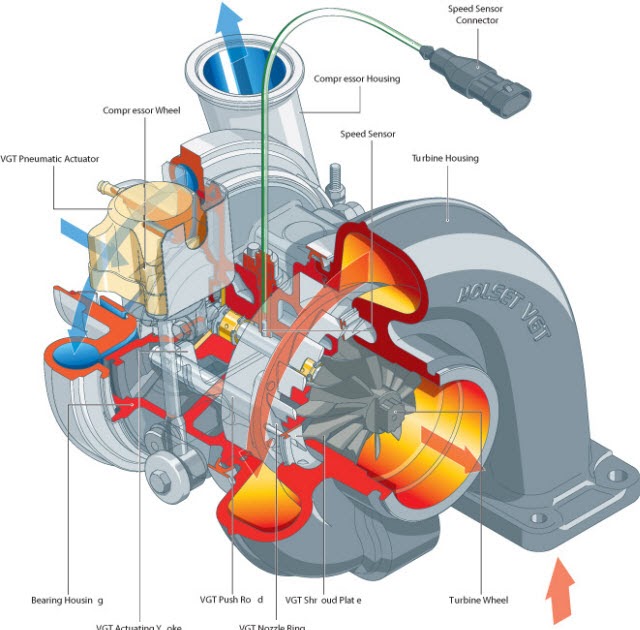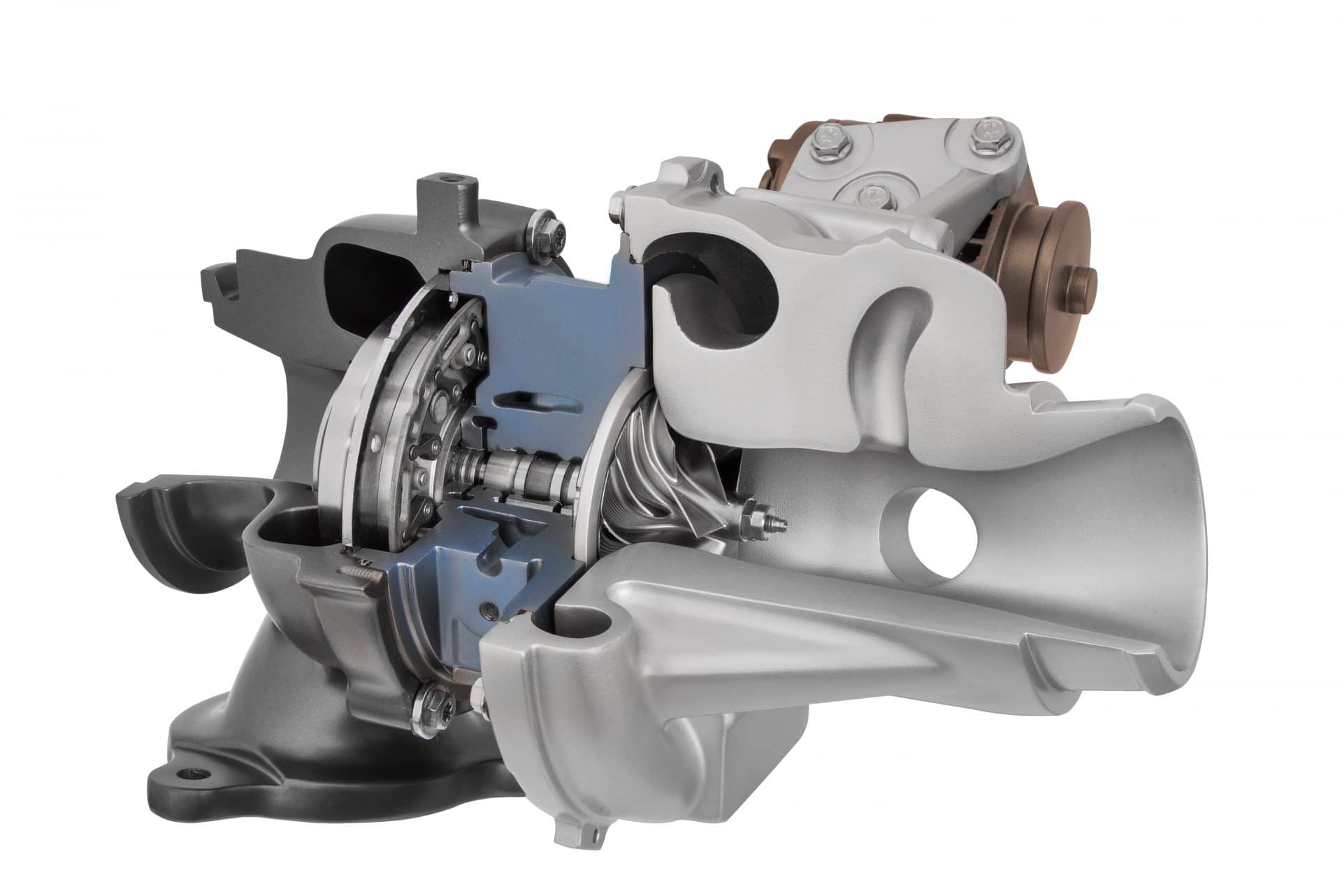Variable Geometry Turbocharger (VGT)
How Does A Variable Geometry Turbocharger Work Engineering Explained
Variable geometry turbochargers is a key innovation area in automotive. Variable geometry turbochargers, abbreviated as VGTs, represent turbocharger variants engineered for enhancing engine.
Audi turbochargers with variable turbine geometry YouTube

VGT turbochargers, or Variable Geometry Turbochargers, are a type of turbocharger used in modern diesel engines. These turbochargers are designed to provide better performance and fuel efficiency than traditional turbochargers, which are fixed-geometry units. In this blog post, we'll take a closer look at VGT turbochargers and how they work.
HD Solutions VariableGeometry Turbocharger Actuator9045503 The Home Depot

A variable geometry turbo works by using several vanes placed around the exhaust turbine. These vanes pivot in response to the airflow coming into the turbo. When there is a reduced exhaust gas airflow at a low engine RPM, the vanes adopt a more narrow, 'closed' position that squeezes the air at a high velocity into the turbine, allowing it to spool up and spin more quickly.
Variable Geometry (VGT) VS Sequential Turbocharger CarBikeTech

A variable geometry turbo for a diesel engine controls engine exhaust flow through the turbine wheel using a row of vanes. These vanes open and close to match the engine's exact boost requirements. At LOW SPEEDS, the vanes close, which: Restricts exhaust airflow through the turbine Increases turbine power Increases boost pressure
How Does A Variable Geometry Turbocharger Work Engineering Explained
Turbochargers with Variable Turbine Geometry (VTG) Knowledge Library borgwarner.com Knowledge Library BorgWarner Turbochargers with Variable Turbine Geometry (VTG) Hybrid concepts require maximum efficient internal combustion engines to achieve a significant reduction in CO emissions.
Variable Geometry Turbocharger Less Lag, More Torque! YouTube

The variable-geometry turbocharger has a mechanism by which the inlet area can be varied to achieve the optimal A/R for a given flow rate. This is achieved by varying a set of aerodynamic vanes which direct the exhaust gas flow onto the turbine wheel. I recently had the opportunity to dismantle a variable geometry turbocharger manufactured by.
Variable Geometry Turbocharger (VGT)

Porsche's variable geometry turbos also utilised an 'Overboost' function, which increased torque by 60Nm for ten seconds. While creating huge amounts of power is relatively easy, keeping the components cool enough is another issue. Total outputs for the 3.6-litre twin-turbo flat-six are 353kW at 6000rpm and 680Nm at 2100-4000rpm.
VariableGeometry Turbocharger (VGT) Troubleshooting StepbyStep Guide FDIESEL Common Rail

In a nutshell, variable geometry turbochargers (VGT) are combining the benefits of a small A/R ratio and a large A/R ratio into one unit, bringing together the advantages of both types. Types of variable geometry turbochargers. Variable geometry turbochargers means variable A/R ratios.The only plausible way of getting a variable A/R ratio is by varying the cross-sectional area A of the exhaust.
How Does A Variable Geometry Turbocharger Work Engineering Explained
A Variable Geometry Turbocharger (VGT) is a type of turbocharger that is designed to optimize engine performance by adjusting the flow of exhaust gas into the turbine. Unlike a traditional fixed-geometry turbocharger, a VGT uses variable vanes to control the and boost pressure.
Increase the Power With Variable Geometry Turbocharger cartestimony

Turbocharger and its Major Types | Variable Geometry (VGT) vs Fixed Geometry (FGT) By Utkarsh Bhardwaj October 4, 2020 1 16189 Over the years, automotive technology is reaching new heights. The IC engines are becoming more powerful, more efficient, more reliable and are even less harmful to the environment.
Variable Geometry Turbocharger (VGT)

The Komatsu Variable Geometry Turbocharger is able to alter the geometry of its turbine housing to optimise the boost pressure over a wide range of engine speeds. The KVGT achieves this by hydraulically actuating sliding vanes to allow for precise and reliable operation, while having few moving parts makes it very durable and reliable.
Variable Geometry Turbocharger (VGT)

open access • Axial opposed-piston engine with wobble-plate mechanism and VTG • • • Abstract The increasing trend of low-carbon policy obligates engine manufacturers to implement new solutions to meet demanded emission reduction.
variable geometry turbocharger

Variable-geometry turbochargers ( VGTs ), occasionally known as variable-nozzle turbines ( VNTs ), are a type of turbochargers, usually designed to allow the effective aspect ratio (A/R ratio) of the turbocharger to be altered as conditions change.
Variable Geometry Turbocharger (VGT)

Variable geometry turbocharging (VGT) at its most basic level is the first step up from standard fixed geometry turbocharger systems. Currently, VGTs offer significant alternative options or complementarity vis-à-vis more advanced turbocharging options.
★LET'S SEE WHAT MODERN EGR SYSTEM CONSISTS OF★

A variable geometry turbomachine uses movable vanes to optimize its efficiency at different operating conditions. This article refers to movable vanes as used in liquid pumps and turbocharger turbines. It does not cover the widespread use of movable vanes in gas turbine compressors. Performance characteristics of turbomachines [1]
Turbocharger and its Major Types Variable Geometry (VGT) vs Fixed Geometry (FGT)

. Pivoting vane (left) and moving wall (right) variable geometry turbochargers 1. Turbine housing; 2. Variable angle vanes; 3. Adjusting ring There are a number of different acronyms that are commonly used when referring to turbochargers with variable geometry turbines.